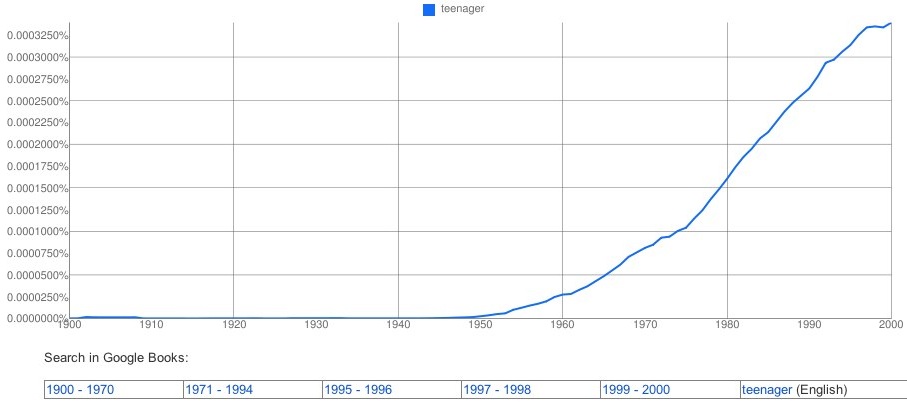There’s this really cool Google gadget called Google Labs’ Ngram. As you may know, Google has scanned millions of books (about 5 million to be precise) which means they are now searchable. One of the searches you can do is via Google Ngram: search for certain keywords in books over a certain period of time. It gives you an absolutely fascinating view of patterns and trends. Take for instance the word teenager, we’ve all heard that it only came into use after the Second World War but here’s the graph that proves it:

Until 1950 the word teenager did not appear in books and ever since it’s been steadily growing in popularity. Let’s have a look at another one: youth ministry. How ‘recent’ is that word and what trends can we see in books on youth ministry?

Again, not much happening till even the early seventies and then youth ministry took off slowly, but steadily. Interesting to see is the dip around 1995 or so, I’m very curious what caused that. Ever since, there’s been a strong increase in popularity of the phrase ‘youth ministry’ in books. A third search I did was for the word ‘youth leader’:

What’s interesting here is that the term came into youth before there was talk about teenagers or youth ministry. The sharp rise in the thirties was partly due to Hitler’s ‘Hitlerjugend’, where leaders were also called youth leaders. Sadly effective, Hitler used young people like none before him to make ‘converts’ at an early age. As you can see, there are far more fluctuations in the use of the term ‘youth leader’, no doubt because the term hasn’t been used exclusively in churches, but also in non-Christian youth work. Still, interesting, right?
If you want to know more about Google Ngram, I recommend this TED video where Ngram is explained and where they show how you can detect for instance censorship or propaganda (please note that there’s one foul word about halfway though):
Leave A Comment